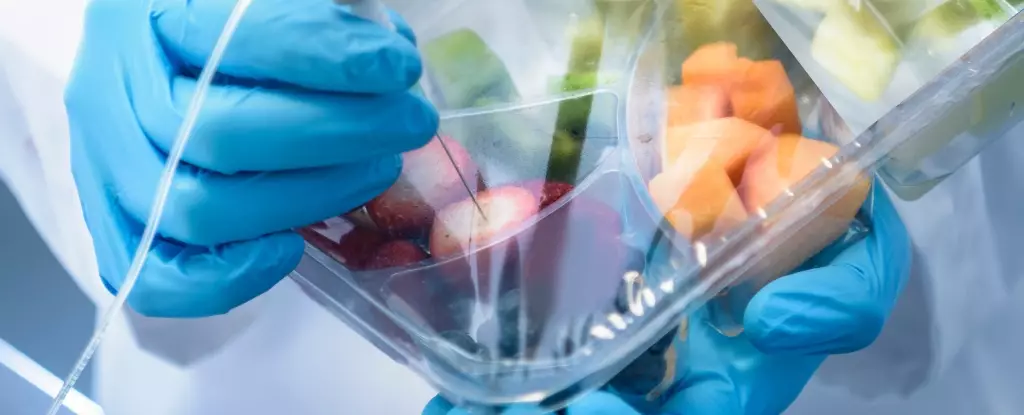Recent findings by researchers highlight a startling revelation: over 3,600 chemicals associated with food packaging are now present in human bodies. These substances, some of which pose significant health risks, emphasize the urgency of evaluating our interaction with everyday packaging materials. While some chemicals have been extensively researched, such as PFAS (per- and polyfluoroalkyl substances) and bisphenol A (BPA), a large number remain largely uncharted. The study, led by Birgit Geueke from the Food Packaging Forum Foundation in Zurich, underscores the pressing need for deeper inquiry into the implications of these substances on human health.
Food contact chemicals (FCCs) are substances designed for or able to migrate into food from various packaging materials, including plastic, glass, metal, and even paper. Researchers had previously compiled a database of approximately 14,000 FCCs, recognizing their potential to inadvertently enter the food supply. The recent study shocked the scientific community by revealing that nearly a quarter of these chemicals—3,601 in total—have been detected in human biomonitoring databases. This unexpected volume raises vital questions about the safety of our food supply and the materials used in its packaging.
While some of these chemicals, including several PFAS varieties and BPA, are already flagged for their hazardous effects, the health implications of many other detected chemicals are still unclear. The research stresses an alarming gap in knowledge about how these chemicals migrate from packaging into food and subsequently into the human body, making it imperative for scientists and health officials to investigate further.
Among the identified chemicals, a subset of approximately 100 substances has been categorized as posing high concern for human health. PFAS, notorious for their persistence in the environment (often dubbed “forever chemicals”), have been linked to various health issues. Similarly perilous is bisphenol A, which disrupts hormonal functions and has faced regulatory scrutiny, particularly concerning its use in baby products. Phthalates, another significant class of endocrine disruptors, are known for their links to infertility and other reproductive issues.
However, one of the more troubling discoveries is the presence of oligomers—byproducts from the manufacturing of plastics—about which there is minimal existing research on their impact on health. Geueke notes that the overall body of evidence regarding these chemicals falls short, driving home the need for extensive studies into both their individual and combined effects on health.
A critical consideration is the potential for health risks associated not just with individual chemicals but also with their interactions. The study indicates findings of samples that contained as many as 30 different PFAS compounds. Such a mix could amplify potential toxicity levels, complicating the already intricate assessment of health impacts. The adage “the dose makes the poison” reflects a traditional approach to toxicology; however, the realities of chemical exposure—especially through complex mixtures—demand an evolved perspective on risk assessment.
Though the research cannot pinpoint whether high concentrations of these chemicals were detected, Geueke’s warnings about potential interactions between substances remain vital. She proposes that consumers should minimize their exposure, advocating for practices such as reducing the amount of time food is in contact with its packaging and avoiding reheating food in containers they came in.
As discussions surrounding these findings gain momentum, experts urge consumers to be proactive. Duane Mellor, a specialist in evidence-based medicine, recommends that people focus on minimizing unnecessary exposure to questionable chemicals while pushing for better data on their effects. With regulatory bodies increasingly recognizing the need for stringent chemical management, the European Union is poised to ban PFAS from food packaging and similarly limit BPA usage dramatically.
While the recent study reveals a concerning landscape of chemical exposure through food packaging, it also serves as a rallying cry for increased awareness, research, and regulatory action. The call for comprehensive studies into the health implications of food contact chemicals is more pressing than ever. As consumers, educating ourselves and advocating for safer practices in food packaging can contribute significantly to reducing potential health risks associated with these ubiquitous contaminants.



Leave a Reply